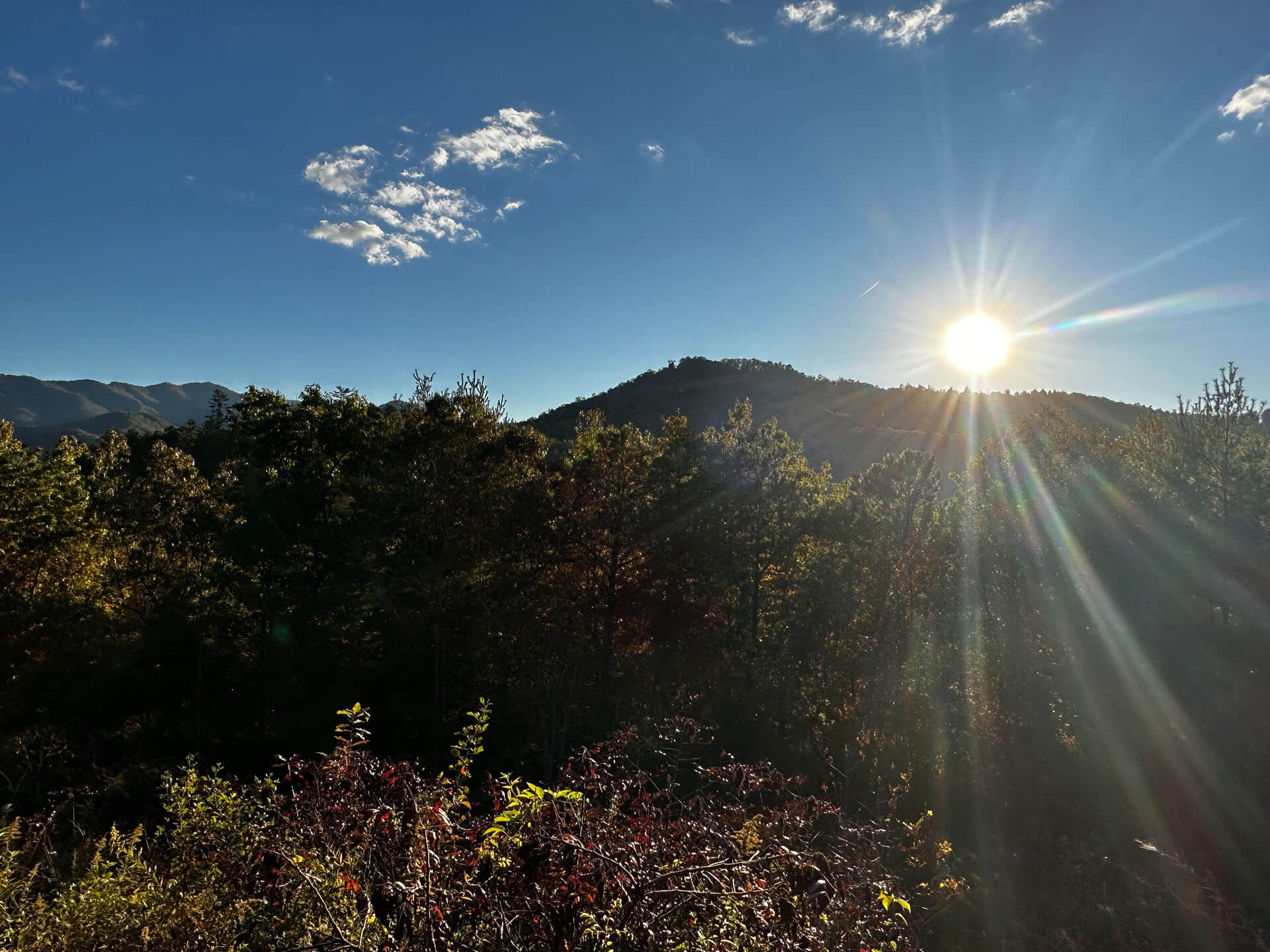In life’s daily grind, finding moments of tranquility and peace can feel like another complex task added to our to-do list. But what if you can relieve stress with simple relaxation techniques you can easily weave into your daily life? It doesn’t require fancy technology or elaborate planning. You simply step out into nature. This is the essence of nature therapy—an effective and easy approach to relaxation that reconnects you with the healing power of the natural world.
In this article, we delve into the heart of nature therapy, exploring how simple acts of connecting with nature can be transformative relaxation techniques.
Learn Relaxation Techniques Using Nature Therapy
What Is Nature Therapy?
Nature therapy is a holistic healing technique that involves connecting with nature to enhance overall well-being. Also known as ecotherapy or green therapy, nature therapy utilizes relaxation techniques such as mindfulness, meditation, and deep breathing exercises in natural environments like forests, parks, or gardens.
Nature therapy can help reduce stress, anxiety, and depression by immersing you in the soothing sights, sounds, and smells of the natural world. Engaging in nature therapy not only promotes relaxation but also boosts mood, creativity, and mental clarity, making it a powerful tool for stress relief and relaxation.
Benefits of Nature Therapy

Spending time in nature is one of the most effective relaxation techniques that offers numerous benefits for both mental and physical well-being. One study found that nature-based therapy, as part of integrative treatment, is effective in helping people with psychosomatic disorders, which are conditions that involve both physical and psychological factors.
Nature therapy contributes positively to mental well-being, leading to improvements in various aspects such as mood, soul level, well-being, social interaction, and coping with problems and illness.
Stress Reduction
One benefit of nature therapy is stress reduction. Immersing yourself in natural surroundings can lower cortisol levels and promote a sense of calmness.
In a North Carolina Medical Journal publication, researchers confirm that spending time in parks and green spaces can reduce stress, lower the likelihood of anxiety disorders and depression, and increase happiness and well-being.
Nature therapy helps you deal with the pressures and demands of modern life, by providing a peaceful retreat where you can unwind, recharge, and find inner peace.
Cognitive Improvement
Spending time in natural environments has been linked to improved cognitive functions. These include attention, memory, creativity, and problem-solving abilities.
One aspect that benefits from nature therapy is attention. Nature has calming and subtle stimuli that attract attention without being overwhelming. This type of attention, known as “soft fascination,” allows individuals to maintain focus without experiencing mental fatigue or cognitive overload. For example, observing the gentle sway of trees, listening to birdsong, or feeling the warmth of sunlight can engage attention that promotes sustained concentration and mental clarity.
Moreover, nature therapy stimulates creativity by providing a conducive setting for creative thinking and problem-solving. Whether taking a walk in the woods, sketching a landscape, or simply daydreaming amidst nature’s beauty, these activities can spark creative insights and enhance your cognitive abilities.
Nature therapy also contributes to improved problem-solving skills. The calming and stress-reducing effects of natural environments help individuals approach challenges with a clearer mind and a more positive outlook.
Emotional Well-being
In addition to its cognitive benefits, nature therapy contributes to emotional well-being and mental health. This holistic approach encompasses various aspects of emotional wellness, including the alleviation of symptoms associated with anxiety, depression, and other mood disorders.
Nature therapy provides a natural antidote to stress and negative emotions. Surrounded by nature’s beauty and tranquility, you often experience a sense of calmness and relaxation, which can significantly reduce feelings of anxiety and tension.
Furthermore, spending time in nature has been shown to uplift mood and increase feelings of happiness and contentment. The positive experiences derived from outdoor activities such as hiking, gardening, or simply sitting in a peaceful garden can profoundly impact your emotional state.
Types of Nature Therapy
Nature therapy involves individual as well as group activities that promote connections with nature. It can also be integrated into traditional therapy sessions. Here are some common examples of different types of nature therapy activities:
Forest Bathing

Forest bathing, also called “shinrin-yoku,” is where you immerse yourself in the calming atmosphere of the forest. The Japanese Ministry of Agriculture, Forestry, and Fisheries coined the term in the 1980s, and Japanese physicians also advocate for forest bathing as a rejuvenating respite from the fast-paced urban lifestyle.
Here’s a simple guide on how you can practice forest bathing:
- Start by choosing a natural setting, such as a forest or wooded area, that is peaceful and free from distractions.
- Disconnect from technology to fully immerse yourself in the environment.
- Engage your senses by walking slowly and mindfully, taking in the colors, textures, scents, and sounds of the forest.
- Practice deep breathing exercises to inhale the fresh air and relax your mind.
- Observe nature by noticing the details of plants and animals around you.
- Cultivate feelings of gratitude for the beauty of nature and slowly transition back to your daily routine, carrying the sense of calm and rejuvenation with you.
The healing power of trees is harnessed during forest bathing by simply being present in the forest environment. Being present in the moment allows you to let go of worries and distractions and connect profoundly with the natural world.
Mindful Walking
Mindful walking is the practice of being fully present and aware while walking, focusing on each step, breath, and the sensations around you. This technique calms the mind and reduces stress levels by promoting mindfulness throughout the activity.
To start mindful walking, here are the steps we recommend:
- Find a quiet and peaceful location, preferably outdoors.
- Take a few deep breaths to center yourself and focus your attention on the present moment.
- Begin walking slowly and deliberately, paying attention to each step you take.
- Notice the sensations in your feet as they make contact with the ground.
- If you find your thoughts drifting, gently redirect your attention to the feeling of walking.
- Engage all your senses, noticing the textures, colors, and patterns in nature.
- Continue walking mindfully for a few minutes or as long as feels comfortable.
- When you’re ready to finish, gradually slow down your pace and come to a stop.
- Take a moment to reflect on your experience and how you feel after the mindful walk.
By incorporating mindful walking into your routine, you can experience a sense of peace and relaxation with every step you take.
Nature Sounds Meditation
Nature sounds meditation is a mindfulness practice that encourages individuals to immerse themselves in the calming and rejuvenating sounds of the natural environment. This form of meditation harnesses the therapeutic power of nature’s sounds, including birdsong, rustling leaves, gentle waves, or flowing water.
Here’s an easy guide on how you can meditate using the sounds of nature:
- Find a quiet outdoor space where you can comfortably sit or lie down.
- Close your eyes and focus your attention on the various sounds around you.
- Listen mindfully to the chirping of birds, the rustle of leaves in the wind, the gentle babbling of a nearby stream, or any other natural sounds present in your surroundings.
- As you tune into these soothing sounds, allow yourself to let go of distractions and worries.
- Pay attention to the rhythm and cadence of the sounds, noticing their subtle variations and harmonies.
- Let the sounds guide you into a state of deep relaxation and inner calm.
Allowing yourself to immerse in nature’s sounds can lead to a profound sense of tranquility and connection with the world around you.
Grounding Techniques
Grounding techniques help you stay connected to the present moment and your surroundings. These techniques can include focusing on physical sensations, such as feeling the ground beneath your feet or engaging in deep breathing exercises.
Grounding techniques are often used in therapy to manage anxiety, trauma, or dissociation by promoting a sense of stability and safety.
You can practice grounding techniques by following these steps:
- Choose a calm and quiet environment where you can stand or sit comfortably and focus without distractions.
- Take slow, deep breaths, inhaling through your nose and exhaling through your mouth.
- Pay attention to your physical sensations. Feel the ground beneath your feet, the texture of any objects you’re touching, or the temperature of the air around you.
- Use visual anchors. Look around and identify specific objects or colors in your environment.
- Repeat a grounding mantra or affirmation to yourself. For example, “I am safe and grounded,” or “I am rooted like a tree.”
- Whenever your mind starts to wander or thoughts become overwhelming, gently bring your focus back to your breath, physical sensations, or chosen grounding technique.
Practice grounding techniques for as long as you need to feel centered and present. It could be a few minutes or longer, depending on your comfort level and the situation.
After practicing grounding techniques, take a moment to reflect on how you feel. Notice any changes in your mood, stress levels, or sense of calmness.
Outdoor Yoga

Outdoor yoga combines the benefits of movement and mindfulness in the tranquility of nature. The gentle flow of yoga poses in the fresh outdoor air helps release stress and tension from the body, creating a serene environment for relaxation.
Here are a few reminders if you want to practice outdoor yoga:
- Choose a Suitable Location: Select an outdoor space that is conducive to yoga practice, such as a park, beach, garden, or open area with a flat surface. Ensure the area is clean, free of distractions, and offers a sense of tranquility.
- Check the Weather: Before heading outdoors, check the weather forecast to ensure favorable conditions for outdoor yoga. Avoid practicing in extreme weather conditions such as heavy rain, strong winds, or excessive heat.
- Wear Comfortable Clothing: Wear comfortable, breathable clothing that allows for ease of movement and flexibility during yoga practice. Consider dressing in layers to accommodate temperature changes.
- Bring Water and Sun Protection: Stay hydrated by bringing a water bottle with you. Additionally, protect yourself from the sun’s rays by wearing sunscreen, a hat, and sunglasses if practicing outdoors during sunny hours.
- Enjoy Nature’s Ambiance: Embrace the natural surroundings and incorporate elements of nature into your practice. Listen to the sounds of birds chirping, feel the gentle breeze on your skin, and appreciate the beauty of your outdoor environment.
Embracing Nature as Your Ultimate Relaxation Retreat
By connecting you with the serene beauty of the outdoors, nature therapy can effectively rejuvenate your mind, reduce stress, and enhance your overall well-being. These relaxation techniques are simple, accessible, and adaptable, so you can easily incorporate them into your daily routine and experience the benefits of nature’s healing power.
If you’re ready to embrace the transformative power of nature and experience ultimate relaxation, it’s time to connect with Basecamp Smoky Mountains. Contact us today to book your nature retreat and embark on a journey of rejuvenation, stress relief, and reconnecting with the serene beauty of the outdoors.







